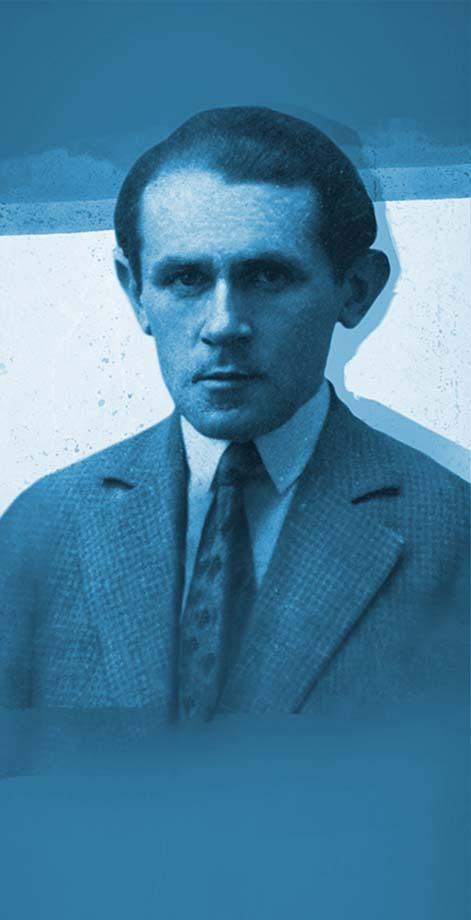
12 VII 1892, Drohobytsch — 19 XI 1942, Drohobytsch (today‘s Ukraine)
Bruno Schulz was a writer, graphic artist, painter, and draughtsman. His two collections of short stories, The Street of Crocodiles and Sanatorium Under the Sign of the Hourglass, are still widely read and analyzed worldwide. Regarded by many as a creative genius and mythical figure, he continues to be an inspiration for other artists to this day.
Bruno Schulz was born on 12 July,1892 to a cloth merchant’s family living in Drohobycz (today’s Ukraine). His family was part of the Jewish community, however, they did not live according to Jewish customs and chose Polish, instead of Yiddish, as their language. In his writings he immortalized the tenant building in which he lived, describing it in a series of short stories which were published under the title Cinnamon Shops (in English known as The Street of Crocodiles). Upon graduating from upper secondary school, he studied architecture at Lviv Polytechnic. During World War I, Schulz’s family spent several months in Vienna. When his father died, he assumed responsibility for supporting the family. In 1924, Bruno Schulz took up a position in a middle school in Drohobycz, first as an art teacher, and later also as a handicraft teacher.
His literary début came in 1933 with the publication of the short story Birds in the literary magazine Wiadomości Literackie (‘Literary News’); in fact, The Street of Crocodiles was published in the same year thanks to the support of another Polish writer, Zofia Nałkowska. Despite remaining a modest teacher from a small town, Bruno Schultz quickly became a famous and significant figure in the Warsaw literary scene. In 1937, he published a second collection of short stories, Sanatorium Under the Sign of the Hourglass. He kept in touch with many artists and writers of the era, including Witold Gombrowicz, Artur Sandauer, Witkacy (Stanisław Ignacy Witkiewicz), and Debora Vogel. Both his art and writings reflect foremostly the intricacies and complexities of his internal life. His enigmatic unpublished novel, The Messiah is believed to have survived the war, and the search for the missing manuscript continues to this day.
In 1941, when the Germans entered Drohobycz, Felix Landau, a Gestapo officer renowned for his cruelty, extended his “protection” to Bruno Schulz, ordering him to produce various works of art in return. Ultimately, Schulz died at the hands of another Gestapo officer who shot him in the street of his hometown on 19 November, 1942. His work, however, lives on, continuing to attract the interest of researchers and readers worldwide.